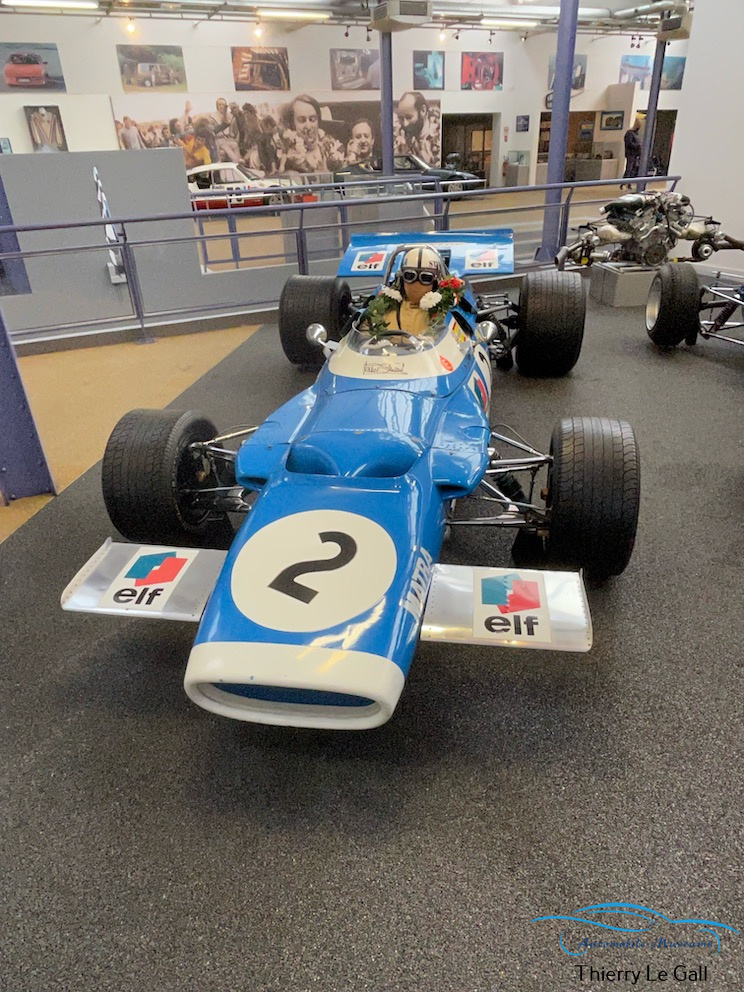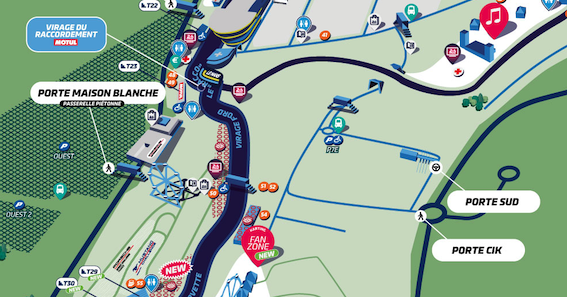24 Hours of Le Mans Museum, France
From August 1, 2025 to March 31, 2026
As announced in a recent article, the 24 Hours of Le Mans Museum closed its doors immediately after the 2025 edition of Le Mans Classic and will reopen in 2026 following major expansion work. In the meantime, the ACO is setting up a temporary museum in a dedicated two-story structure, each floor measuring 600 m², to host an exhibition that will keep motorsport fans entertained. To offer a high-quality exhibition in the spirit of the future M24 museum, this selection of around fifteen cars brings together Sport-Prototypes (equivalent to today’s Hypercars) and Formula 1 cars, all linked to a World Championship title, driver or manufacturer, or even both.


Photo Credit ACO / NL Realisation
While Formula 1 has retained a single label since the early 1950s despite numerous regulatory changes, it is a little more complicated for the “sport-prototype” category, which basically includes cars that compete in endurance races such as the 24 Hours of Le Mans. These are two-seater cars (in theory) with covered wheels (to a greater or lesser extent). Over time, they have been defined by a Group, a Class, or a label.


In the 1950s and 1960s, Ferrari was the dominant brand in this category, notably with the magnificent 330 P (as in Prototype), which culminated in the 330 P4. In the early 1970s, regulations changed to require 3L engines, as in F1. Ferrari was World Champion in 1972 with the 312 PB, but did not compete in the 24 Hours of Le Mans, fearing that its 12-cylinder engines would not last the distance. Conversely, Matra focused solely on the 24 Hours of Le Mans in 1972 with the MS670 and won the race. The duel between Ferrari and Matra was intense for two years. Matra triumphed again in Le Mans in 1973 (MS670B) and 1974 (MS670C). The MS670 also won the World Championship in 1973 and 1974. It is the 1973 MS670B that represents this great epic here.





Photo Credit Automobile-Museums archive
Porsche quickly took over, and the Porsche 956 dominated the scene between 1982 and 1985, giving Jacky Ickx his last victory at Le Mans in 1982. The Peugeot 905 is another legendary car in French motorsport, with two victories at Le Mans in 1992 and 1993, and a World Championship in 1992. That year, the Peugeot 905 dominated the championship, taking all the pole positions and winning all the races after the 24 Hours of Le Mans. The World Championship disappeared in 1993 due to a lack of enough manufacturers participating. It was not until 2012 that a new World Championship was relaunched for this category.




Photo Credit Automobile-Museums archive
With the introduction of hybrid systems, Porsche returned to the category with the Porsche 919 Hybrid, winning three world titles and three 24 Hours of Le Mans races in 2015, 2016, and 2017. After many years of effort, Toyota finally won the 24 Hours of Le Mans, with the TS050 Hybrid scoring three consecutive victories between 2018 and 2020, and two world titles in 2019 and 2020.


Photo Credit Automobile-Museums archive


Photo Credit ACO / NL Realisation
Beyond the 24 Hours of Le Mans and prototypes, the new, expanded M24 museum will broaden the selection of cars on display to include other motorsport disciplines, and the F1 cars featured in this temporary museum offer a glimpse of what is to come.
Visitors will discover three representatives of the 1960s: Denny Hulme’s Brabham BT24 (1967 World Champion), Graham Hill’s Lotus 49 (1968 World Champion), and Jackie Stewart’s Matra MS80 (1969 World Champion). The Matra MS 80 is the first French F1 car to win a world title (even though it is powered by a Ford Cosworth V8 engine). It is also the car in which Jackie Stewart won his first world title, becoming the specialist of odd-numbered years, as he went on to win his other two titles in 1971 and 1973, the latter in the Tyrrell 006, which is also on display.

Photo Credit Automobile-Museums archive


Photo Credit ACO / NL Realisation
Richard Mille, part of whose collection will be on display at the future M24, is a great Ferrari enthusiast and collector, so it is no surprise to find several Maranello cars here. The Ferrari 312 Ts are recognizable by their front wing, set above the nose of the single-seater. With the first generation, Ferrari won the constructors’ and drivers’ titles with Niki Lauda in 1975. Another double win with the constructors’ and drivers’ titles for the 312 T4 in 1979, this time with Jody Sheckter.


Photo Credit Automobile-Museums archive


Photo Credit ACO / NL Realisation
Maranello then had to wait 20 years for new titles and the Michael Schumacher era. From 2000 to 2004, Ferrari won the constructors’ and drivers’ titles five times, each time with Michael Schumacher. Two red single-seaters illustrate this glorious period: the F2001 and the F2002. With the F2002, Ferrari completely dominated the season, winning 15 Grand Prix out of 17 races, including 11 for Michael Schumacher.


Photo Credit Automobile-Museums archive
Such richness on display in the World Champions exhibition whet our appetite and make us eager to discover M24! In addition to the exhibition space, the temporary museum houses an official ACO store, which sells clothing, luggage, books, and many other items bearing the colors of the Le Mans circuit races. Access to the museum is via the South Gate, located on Chemin aux Bœufs, near the horse racetrack.

Free parking is available for visitors. When the circuit is open, the admission ticket includes a visit to the exhibition and the circuit. It is also possible to book a guided tour of the circuit. See here for dates and reservations.
Opening
| Every day from August 1, 2025 to March 31, 2026 | 10 a.m. to 7 p.m. |
Rates
| Museum visit only* | Museum visit + Circuit tour | Museum visit + Circuit Guided tour** | |
| Adults | 8,00 € | 14,00 € | 25,00 € |
| Students, Disabled | 7,00 € | 12,00 € | 21,00 € |
| Youth (10 to 17) | 6,00 € | 11,00 € | 20,00 € |
| Kids (- 10) | Free | Free | 10,00 € |
| Family package | 25,00 € | 45,00 € | |
| Free parking |
* Museum visits only when the circuit is closed (competitions, trials, etc.)
** Guided tours of the circuit in August, in French from August 2 to 20, at 10:30 a.m. and 2 p.m., in English: August 2, 6, 9, 13, 16, and 20 at 2:30 p.m. See the museum website for further dates.
Archive photos from Automobile-Museums, no reproduction rights without the express permission of the owner.
